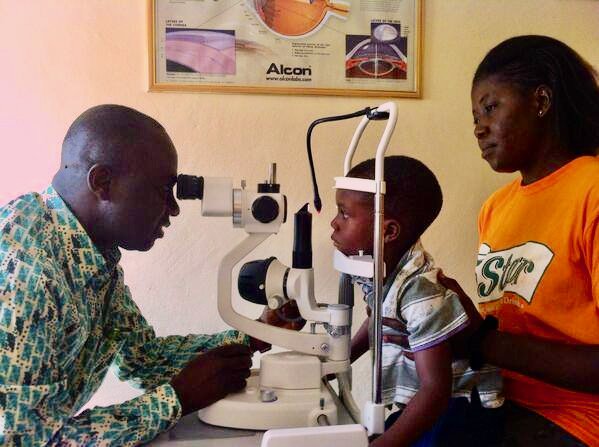
MATERNAL AND CHILD HEALTH CERTIFICATE
Module 5: Alcoholism
The harmful use of alcohol results in an estimated 2.5 million deaths per year. Almost 4% of all deaths worldwide are attributed to alcohol, which is greater than the deaths attributed to HIV/AIDS, tuberculosis, or violence. “Alcohol is also an important cause of health inequalities. Poor populations and low-income countries have a higher relative burden than do high-income populations and countries. Alcohol causes large health-care costs in addition to substantial, but largely unmeasured, social costs.” (1) Part of the reason that alcohol is so harmful is because it is linked both to the incidence of disease and the course of disease. Many die from alcohol-related injuries such as car accidents, violence, or suicide. Others die from the diseases that alcohol causes such as cardiovascular disease, oral cancer, and cirrhosis of the liver.(2)
The harmful use of alcohol is particularly problematic in men. Alcohol use is the leading risk factor for death in males aged 15-59, mainly due to injuries and violence. Worldwide, 6.2% of all male deaths are attributed to alcohol, which is much greater than the 1.1% of female deaths which are attributed to alcohol.(3) “Compared with women throughout the world, men are more likely to drink, consume more alcohol, and cause more problems by doing so. This gender gap is one of the few universal gender differences in human social behavior.” (4) Surveys in many different populations consistently find that men are more than twice as likely as women to report heavy episodic drinking. Men are also consistently more than twice as likely as women to report chronic heavy drinking. “The most common hypotheses to explain why men and women differ in their drinking behavior argue that alcohol consumption both symbolizes and enhances men’s greater power relative to women. Alcohol consumption, particularly in large quantities, has been an emblem of male superiority, a privilege that men have often reserved from themselves and denied to women.” (5) Gender differences in alcohol consumption also reflect culturally influenced gender roles. Thus, it is interesting to note that in places where women are employed and take on more traditionally masculine roles, the differences in drinking tendencies between genders are not as great. (6)
Alcohol and Domestic Violence
Alcohol use is a major determinant of domestic violence. “Biologically, alcohol alters brain receptors and neurotransmitters that can result in more aggressive behavior, from a reduced fear and anxiety of the social, physical and legal consequences of one’s actions. Alcohol-related aggressive behavior is almost always directed towards women who are further rendered powerless and weak.”(7) A 1978 study carried out in the United Kingdom found that 44% of the women sampled reported their partners as being abusive only when they had been drinking. A similar study carried out in 2003 found that victims of domestic violence estimated that 45% of the perpetrators had been drinking. (8)
Stigmatization of Women's Drinking
Though fewer women drink than men, many women who do drink are stigmatized for their behavior. “Double standards of drinking that judge excessive (or any) alcohol use more harshly for women than for men have been reported in many cultures throughout history. This stigmatization may be greater in highly gender–differentiated societies in which women are allowed little if any access to alcohol.” (9) The greater stigmatization of women’s drinking has important implications for health policy. Women with drinking problems in these societies may be more reluctant to seek treatment or may be prevented from seeking treatment by ashamed family members. In addition, when women’s drinking problems are stigmatized, the prevalence of the problem may be seriously underestimated, and policymakers may not know how many women use alcohol and how much harm it is causing women. (10)
Footnotes
(1) Beaglehole, R., & Bonita, R. (2009). Alcohol: a global health priority. The Lancet, 9682(373), 2173-2174.
(2) Burki, T. (2010). Changing drinking patterns: a sobering thought. The Lancet, 376(9736), 153-154.
(3) World Health Organization. (2011). “Global Status Report on Alcohol and Health.” https://apps.who.int/iris/bitstream/handle/10665/44499/9789241564151_eng.pdf;jsessionid=A014809F5E20A2F4F408435C21BE5ACA?sequence=1.
(4) Obot, I. S., & Room, R. (2005). Alcohol, gender and drinking problems: perspectives from low and middle income countries. World Health Organization.
(5) Ibid.
(6) Ibid.
(7) “Alcohol abuse: If we can’t measure it, does it not exist?” Accessed on 15 February 2011.
(8) Galvani, S. (2006). Alcohol and domestic violence: Womens views. Violence against women, 12(7), 641-662.
(9) Wilsnack, S. C., & Wilsnack, R. W. (2002). International gender and alcohol research: recent findings and future directions. Alcohol Research & Health, 26(4), 245.
(10) Ibid.
